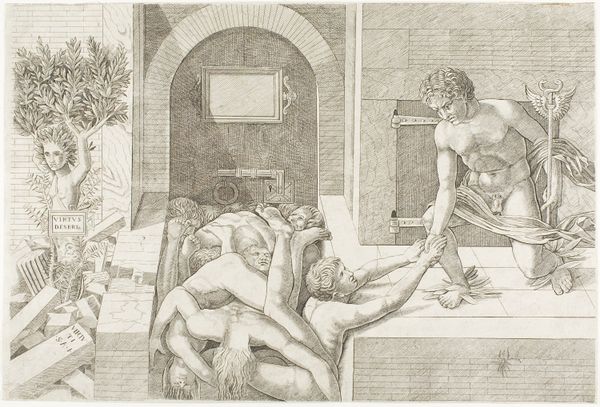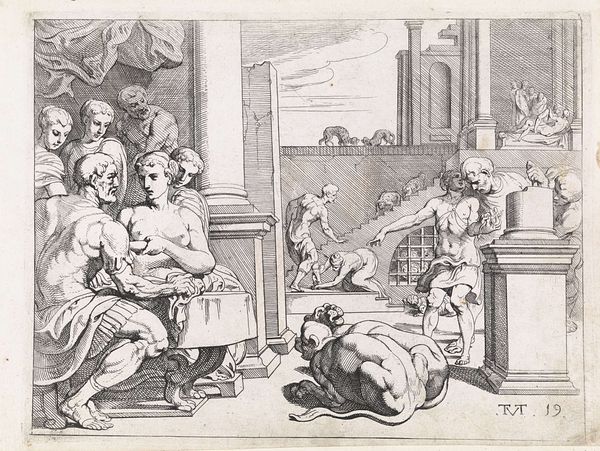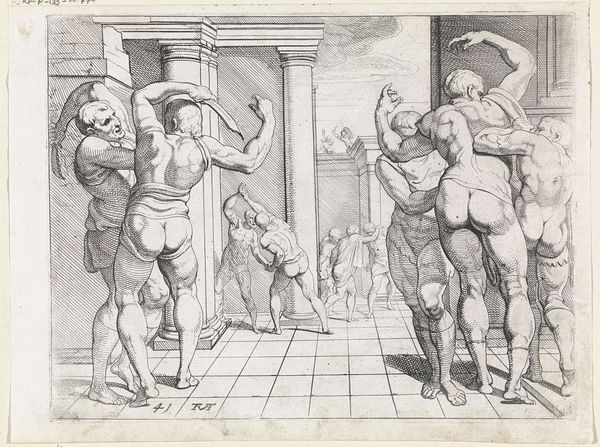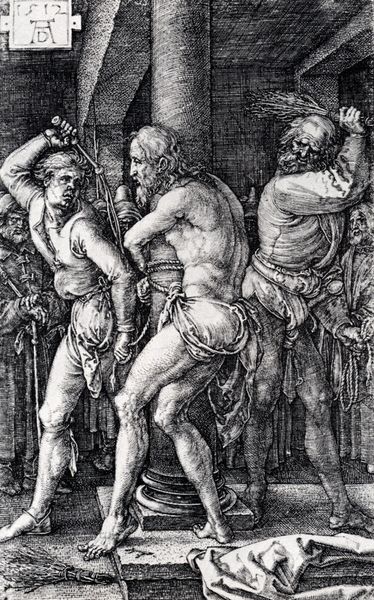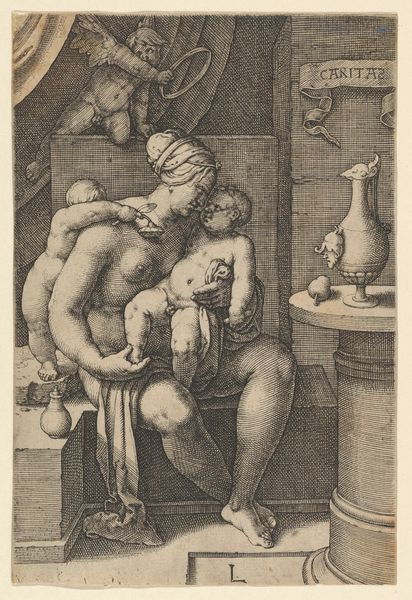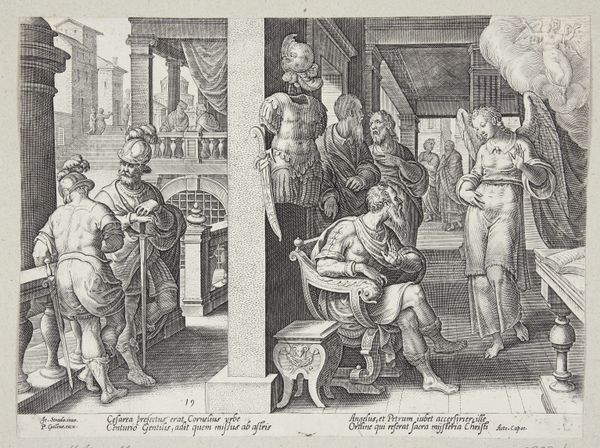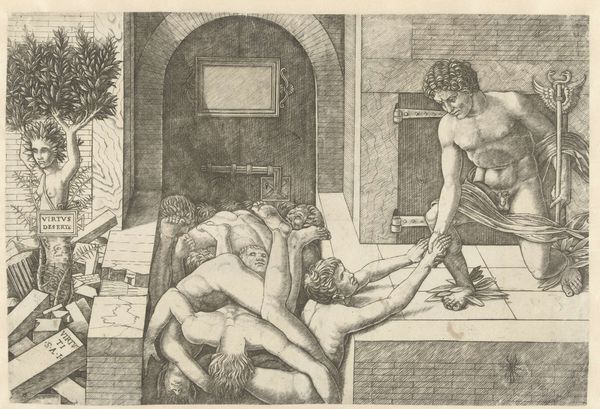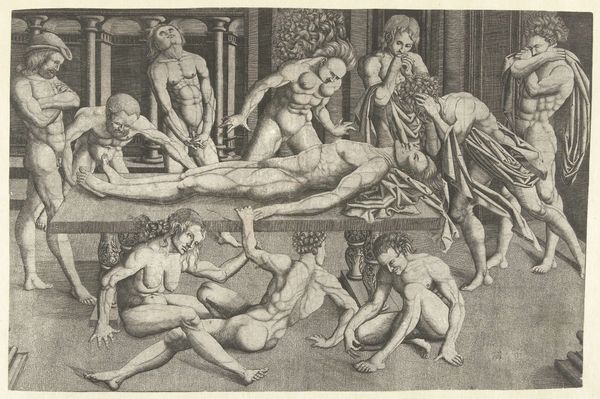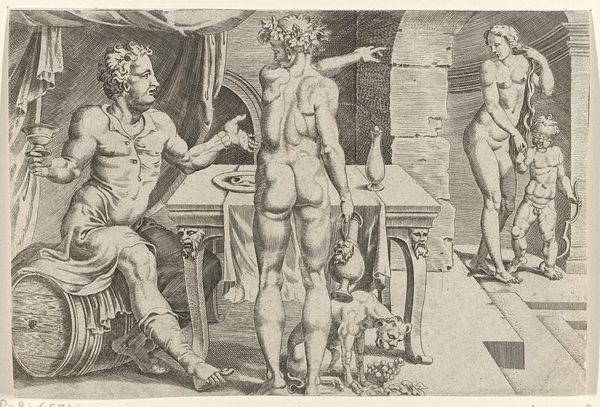
drawing
#
drawing
#
figuration
#
11_renaissance
#
female-nude
#
sketch
#
history-painting
#
northern-renaissance
#
male-nude
Copyright: Public domain
Curator: Right, let's delve into this intriguing drawing by Albrecht Dürer, created around 1516. It’s called "Male and Female Nudes" and it’s currently housed at the Städel Museum in Frankfurt. It's a striking example of Dürer’s mastery of line. Editor: My first thought? Tension. A definite undercurrent of anxiety permeates the scene. It’s those tightly wound, almost frantic lines that create a sense of unease for me. A drawing shouldn’t make me this nervous. Curator: I understand. It does possess a certain rawness. Dürer's intense study of classical ideals of the human form contrasts with the palpable human vulnerability he captures. This interplay between ideal and real, it is fascinating to me. The precarious positioning of some of the figures…it hints at an impending sense of doom, almost. Editor: Definitely! There’s almost a sense of performance, too. These nudes, carefully arranged, feel posed. The very construction suggests a staging of power and vulnerability, which can invite dialogue surrounding art and the way it participates in upholding structural hegemonies in historical context. Curator: Yes, that staging you mention lends it this curious formality—that is both intentional and subtly perverse, wouldn't you say? In his effort to both idealize the human form and to also represent what he actually observed, Dürer almost highlights his internal struggles…the imperfections, and that little hint of something gone wrong. It’s those aspects that really resonate. Editor: Right. I notice particularly the contrasts in age and implied narratives. It makes me question the male gaze inherent in the art-historical canon and in its depiction of both violence and human form and function. It is important to engage in critical thought in all facets of creative experience, and works such as this present fertile ground. Curator: You’re absolutely correct, the inherent gaze invites us to consider Dürer's perspective—perhaps also those of his intended audience. A single drawing can echo much and tell myriad stories when we simply take the time to look, question, and reconsider our biases. It's like a portal to the past, isn’t it? Editor: Precisely! Examining these works opens pathways for conversations about cultural attitudes and the need for continuous critical analysis within the study of art.
Comments
No comments
Be the first to comment and join the conversation on the ultimate creative platform.
